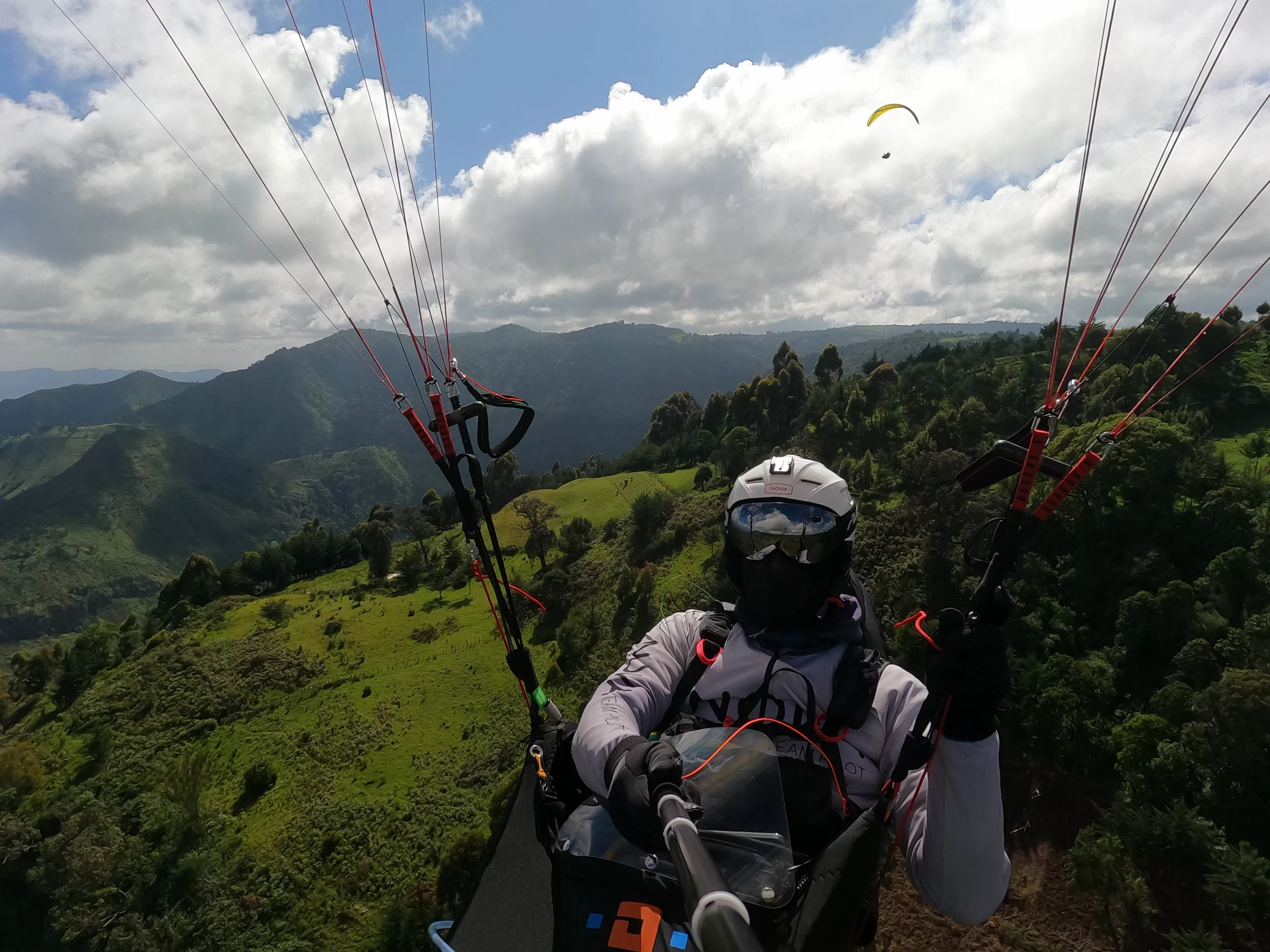
A few words about myself
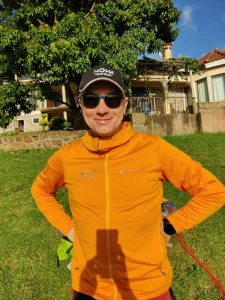 I’ve been flying for over 12 years now, logging more than 1000 hours in the air and over 40 flights exceeding 200 km (straight, flat triangle, and FAI). I fly both in mountainous regions and from winches on flat terrain. I’ve been a Nova team pilot for 8 years. For 10 years, I exclusively flew EN-B+ wings (Mentor 1, 2, 4, 5, 6 light), and last season, I flew with the Niviuk Artik R. This season, I decided to thoroughly test the CODEX, as few pilots have flown it more than once or twice. A good opportunity arose when my friends and I planned our 7th trip to Kenya. Kerio Valley, with its turbulent conditions, is ideal for testing.
I’ve been flying for over 12 years now, logging more than 1000 hours in the air and over 40 flights exceeding 200 km (straight, flat triangle, and FAI). I fly both in mountainous regions and from winches on flat terrain. I’ve been a Nova team pilot for 8 years. For 10 years, I exclusively flew EN-B+ wings (Mentor 1, 2, 4, 5, 6 light), and last season, I flew with the Niviuk Artik R. This season, I decided to thoroughly test the CODEX, as few pilots have flown it more than once or twice. A good opportunity arose when my friends and I planned our 7th trip to Kenya. Kerio Valley, with its turbulent conditions, is ideal for testing.
- Firstly, it allows long comparison flights together with others, especially in the stable air during the first 3 hours after sunrise, provided you find a compatible flying partner.
- Secondly, flying in Kerio means dealing with highly turbulent air, as the valley’s temperature can rise to over 50 degrees Celsius during the day, generating thermals up to 2,500 meters higher than the takeoff altitude.
- Thirdly, there’s consistently a northerly wind, making approximately 50% of the route against the wind (sometimes reaching speeds of 25km/h and more), and encountering rotor turbulence from the terrain.
The first of these factors often puts less experienced pilots to “sleep”, and after about 3 hours, when the other two factors get relevant, serious accidents frequently occur. Unfortunately, Kerio isn’t the easiest place for pilots attempting their first 200 km flight!
About Kerio
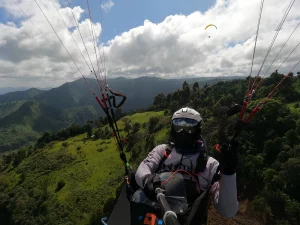 There’s no longer a takeoff point at Kerio Hotel due to legal conflicts, and the area is now partially fenced off. In the south, the Samich Hotel closure means there’s only a field for takeoff (if it’s not occupied by cows). The only active takeoff spot in Kerio currently is in Kilima, with a daily fee of 500 Ksh. It offers easy takeoff for about 5 gliders and allows comfortable takeoff and possible top landing.
There’s no longer a takeoff point at Kerio Hotel due to legal conflicts, and the area is now partially fenced off. In the south, the Samich Hotel closure means there’s only a field for takeoff (if it’s not occupied by cows). The only active takeoff spot in Kerio currently is in Kilima, with a daily fee of 500 Ksh. It offers easy takeoff for about 5 gliders and allows comfortable takeoff and possible top landing.
The best time for long flights in Kerio traditionally falls in January, with possibilities extending from mid-December to mid-February. However, due to climate change, there can be rain during the day, making conditions unpredictable. This year we saw an unusually green landscape, with active waterfalls due to increased river flow from the rainy season. Pilots should also be cautious of Eldoret Airport nearby, which has its controlled airspace. Paragliders have limited airspace under the controlled zone, with a maximum authorized altitude of 1500 meters above ground level, sufficient for ambitious flying given the local topography.
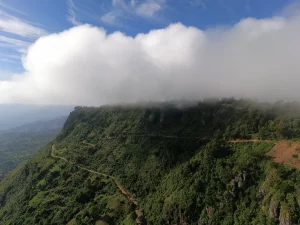
It’s recommended to have evacuation insurance, such as “Flying Doctors,” which provides swift air evacuation to Nairobi and home in case of accidents. Safety-wise, Kerio is well-managed; local motorbike taxis (known as piki piki) typically arrive within 30 seconds after landing, providing convenient and affordable transportation. Accommodations in the area vary in quality, with Kerio View Hotel being a notable option, attracting runners from around the world, earning the area the unofficial title of “Iten – Home of Champions.”
CODEX Review
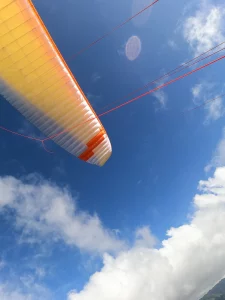 Thanks to the Nova team, I received the CODEX in size M for testing. I got it on January 22nd, just a day after its release, enabling me to take it to Africa. With a takeoff weight of 104kg, I found the M size suitable despite its wide weight range (90-115kg, recommended 100-110kg). I liked it most at about 109kg takeoff weight. In general think that it definitely flies better in the upper load range.
Thanks to the Nova team, I received the CODEX in size M for testing. I got it on January 22nd, just a day after its release, enabling me to take it to Africa. With a takeoff weight of 104kg, I found the M size suitable despite its wide weight range (90-115kg, recommended 100-110kg). I liked it most at about 109kg takeoff weight. In general think that it definitely flies better in the upper load range.
The wing is well-made, with quality evident in details like the comfortable height adjustable carbon fiber B handles. The CODEX, equipped with nitinol, folds easily into a backpack, weighing only 4.7 kg.
Groundhandling and launching the CODEX is completely trouble-free, and the takeoff is immediate.
The CODEX climbs very good even in weak thermals and allows very effective climbing. Comparing the it to the Artik R the CODEX has a distinctly smaller turning radius, a shorter control path, damped movement and generally requires much less attention.
In a strong thermal, it allows you to effectively penetrate the core without unnecessary wing movement I was very surprised by this. The CODEX is just as calm in strong thermals as my Mentor 6 light – and to me the M6 was just pure pleasure in thermals!
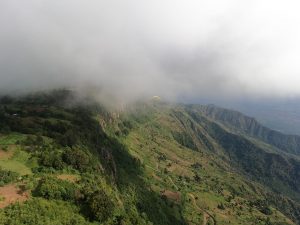 It’s fun to use the speedbar of the CODEX. The increase in speed is immediately noticeable and the CODEX responds very effectively to the control of the rear risers. Stability on the speed bar is very good. I had one frontal and another collapse of about 50% (In both cases my fault: taking pictures on my GoPro with the stick). The glider flew straight in both situations, the wing opens very quickly and requires only a slight reaction from the pilot. During these 70h in Africa the wing did not surprise me once.
It’s fun to use the speedbar of the CODEX. The increase in speed is immediately noticeable and the CODEX responds very effectively to the control of the rear risers. Stability on the speed bar is very good. I had one frontal and another collapse of about 50% (In both cases my fault: taking pictures on my GoPro with the stick). The glider flew straight in both situations, the wing opens very quickly and requires only a slight reaction from the pilot. During these 70h in Africa the wing did not surprise me once.
For descending I used big ears, spiral, side collapse + spiral to the other direction – during each of these techniques the wing reacts absolutely well and loses altitude effectively. It has no tendency to enter dangerous states and is very predictable.
The aspect ratio is only 6.1 so all the time I had the impression that I was flying on a high B. However, this is a real 2 liner in the Sport class! Of cource, flying upwind it seemed to me that a 2 liner with a higher aspect ratio may perform a bit better, but at the expense of stability in flight and with a way higher workload! Everything has its price like said Ziad :) On CODEX there is no problem to fly 4 days in a row for 8h, sometimes 9h in turbulent conditions.
The paraglider did not show any worrying symptoms after 70h of flight in Africa and in my opinion did not require trimming.
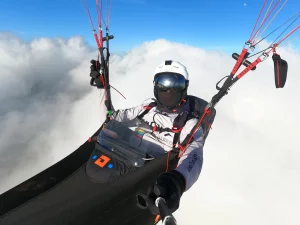
In general, the conclusion is simple – if you are an experienced B pilot and want to make the switch to C then don’t waste any more time on 3 liners. CODEX as a real 2 liner is in my opinion only slightly more difficult to pilot than Mentor 7. When you feel at home under your high-B wing, the CODEX will not pose any challenge to you. What will you gain in return? Much, much more performance flying upwind, better speed and considerably more glide on speed bar. In my opinion, it’s worth it to step up. For a long time I didn’t want to change my class from B to C – when I did, I think it was a little too late :)
CODEX in terms of flying behaviour is like a Mentor only that it glides better and faster.
My flights in Kerio:
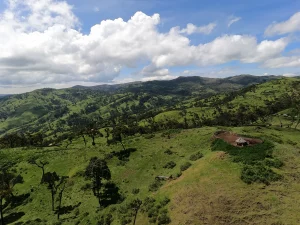
During our 10-day stay, we flew daily, with five flights exceeding 200 km and one bomb out. My best flight covered 260 km, marking a personal best and the longest Polish flat triangle. Though I aimed for 300 km, the weather didn’t permit. You can find almost all of my flights on this link: https://www.xcontest.org/world/en/pilots/detail:LukaszS
